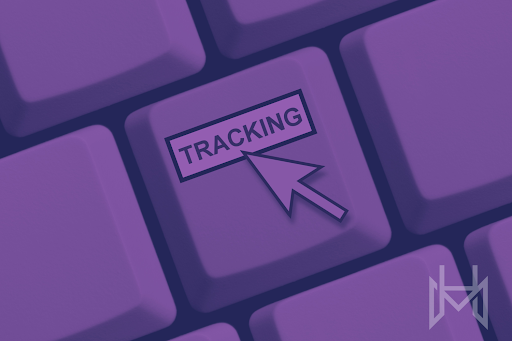How to Make a Killing From Ad Tracking
Advertising campaigns have become increasingly important for businesses to reach target audiences. As online platforms become increasingly popular, digital advertising spending worldwide amounted to $602 billion in 2022 and is expected to rise to $836 billion by 2026. Ad tracking is crucial to any successful online marketing campaign, allowing businesses to track the effectiveness of their ads.
Businesses often struggle to understand their ad tracking metrics, as the process can be complex. A lack of understanding of the metrics can lead businesses to miss out on opportunities or overlook potential campaign problems. Moreover, not all businesses can take advantage of ad tracking’s potential benefits and maximize their return on investment in advertising.
When done right, ad tracking can help businesses gain immense insights into their marketing efforts to maximize their return on investment. This article will explore how ad tracking works and different types of ad tracking and provide tips to make a killing from ad tracking. With the right knowledge and understanding of this powerful tool, businesses can get ahead of the competition by making the most out of their marketing campaigns.
Let’s dive in and explore how to make a killing from ad tracking.
What Is Ad Tracking?
Ad tracking is a type of data collection that allows businesses to track the success of their online advertising campaigns. It involves measuring the effectiveness of an ad campaign by collecting information about how users interact with the ads, such as how many times they viewed or clicked on them.

Here are the key benefits of ad tracking:
- It allows businesses to target relevant advertising to their target audience.
- Ad tracking can provide valuable insights into customer behavior and preferences.
- It helps businesses optimize their ad campaigns for better performance, improving their return on investment.
- It helps businesses identify which channels are most effective regarding conversion rates.
How Tracking Ads Works
Ad tracking typically begins with online ad tracking software, which collects data from users interacting with an online advertisement. This data can include impressions, clicks, conversions, and other metrics that help give insight into the success of the campaign. With this information, businesses can analyze it to determine which ads were the most successful and make changes to improve their performance.
An ad tracking tool can also track how users respond to certain ads, such as whether they purchased or signed up for a newsletter. This allows businesses to assess where their ad campaigns are effective and adjust them accordingly. Furthermore, businesses can use the data to identify more profitable channels and optimize their ad campaigns for better performance.
Types of Ad Tracking
Ad tracking tools come in various forms and allow businesses to track different data types. The following are some of the most common tracking methods:
1. Tracking URLs
Tracking URLs are links with tracking parameters that allow businesses to track the success of their ads. This method involves adding a bunch of tracking parameters, such as source, medium, and campaign details, to each landing page URL. When a user clicks on the link, the tracking parameters are recorded and used to measure the effectiveness of the ad.
Businesses can use this data to identify which ads are performing better and make changes to optimize their campaigns. This method of ad tracking is especially useful for affiliate marketing campaigns where the traffic source needs to be tracked — it allows businesses to accurately measure the performance of their partners’ campaigns.
2. Tracking Pixel
Tracking pixels, or web beacons, are transparent images that track user behavior online. When a user visits a website or interacts with an advertisement, the 1px image pixel is triggered and collects data about their online activity. This data can then be used to gain insights into the performance of the ad and provide marketers with valuable insights.
Here are various types of tracking pixels:
- Standard tracking pixel: Generally used for basic trackings, such as impressions and clicks.
- Conversion tracking pixel: Used to track conversions, that is, when a user takes a desired action (such as making a purchase).
- Retargeting pixel: Tracks users who have visited a website or interacted with an ad and then shows them relevant ads on other websites.
3. Cookies

Tracking cookies are small files stored on users’ computers that allow businesses to track their online activity. When a user visits a website, these tracking cookies are activated and collect data such as browsing behavior and the pages viewed. This data can then be used to measure the performance of ads.
Performance cookies, in particular, are used to track conversions, that is when a user takes a desired action (such as making a purchase). This type of cookie helps businesses understand which ads are performing well and allows them to adjust their campaigns accordingly.
Advertisers can also use cookie times to ensure users are shown the right ads at the right time. For example, if an ad was viewed on a certain day, the advertiser can serve similar ads to those users in the following days, thus increasing the chances of conversions.
Tips for Making a Killing From Ad Tracking
Ad tracking is invaluable for businesses looking to maximize their advertising ROI. By leveraging the data from ad tracking, businesses can identify more profitable channels and optimize their campaigns for better performance. Here are tips for making a killing from ad tracking:
1. Track the Right Ads
Successful ad tracking requires choosing the best ads to track and monitoring them regularly. By tracking key performance indicators such as impressions, clicks, and conversions, businesses can identify which ads are performing well and which need to be optimized. You should also track other metrics such as cost per acquisition, return on ad spend, and average order value to get a complete picture of your campaigns.
2. Analyze Data Regularly
Tracking data is only useful if analyzed regularly and used to make informed decisions. Businesses should regularly review their ad tracking reports to identify issues and change their campaigns. Analytics tools can also be used to gain deeper insights into the performance of their ads and to optimize campaigns for better results.
Analytics tools can also provide a wealth of data about the performance of each ad, such as which channels are driving the most conversions and which are underperforming. This data can be used to identify areas for improvement, such as targeting or creative changes, or to adjust bids and budgets to increase revenue.
3. Keep Up With Trends
Businesses should stay abreast of changes in the industry so they can take advantage of new opportunities and remain competitive. Here are ways to keep up with trends:
- Monitor competitors: Keeping track of competitors’ actions will provide valuable insights for marketers, such as which channels they use and how they manage their campaigns.
- Follow industry news: Staying up-to-date with industry news is essential for understanding emerging trends and technologies that can help businesses optimize their ad-tracking efforts.
- Keep up with consumer behavior: Tracking changes in consumer behavior can help businesses identify new opportunities and adjust their campaigns accordingly. For example, if a particular ad is performing poorly, businesses can adjust their targeting to focus on a different demographic or segment.
4. Automate processes

Businesses need to save time and maximize efficiency. Automated tools can track ads, analyze data more quickly, and automate bid adjustments based on performance indicators. This allows businesses to respond faster to changes in the market and optimize their campaigns on the fly. Automation can also monitor competitor campaigns and adjust bids according to market conditions.
Businesses should also consider using artificial intelligence (AI) tools to automate ad placement, audience segmentation, and creative testing. AI tools are designed to learn from data and make decisions quickly, which can help businesses identify more profitable channels and optimize campaigns for better results.
Take the Leap to Cash in From Ad Tracking
Ad tracking is an essential and powerful tool for businesses to measure their marketing efforts and maximize their return on investment. It can help businesses gain insights into their campaigns, understand their ad tracking metrics, and track the effectiveness of ads. Understanding how ad tracking works and the different types of ad tracking will allow businesses to make a killing from this powerful tool by targeting the right audience, analyzing data effectively, and staying up to date with trends.
Businesses need to remember that ad tracking is only as effective as its user’s knowledge and understanding of it. With the right skills and expertise, you can make the most out of your ad tracking efforts to maximize your return on investment. So take the leap and start cashing in from ad tracking today!
